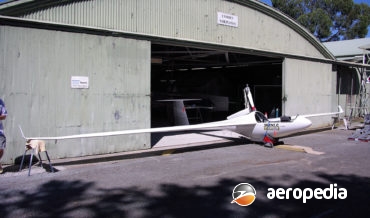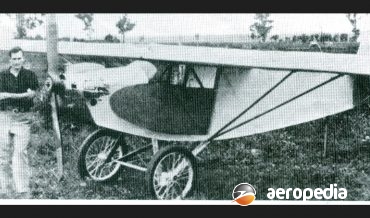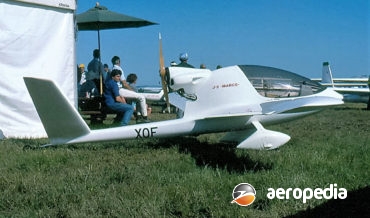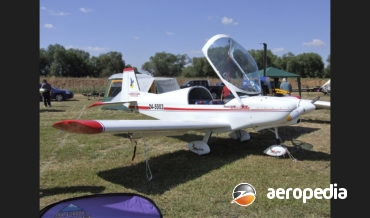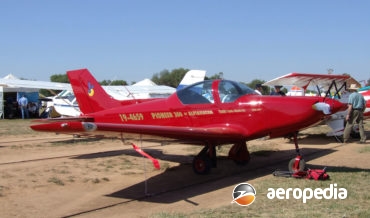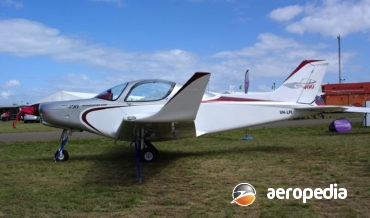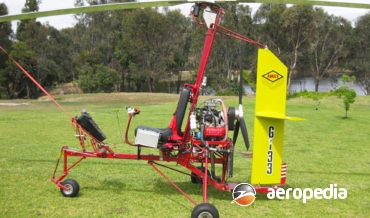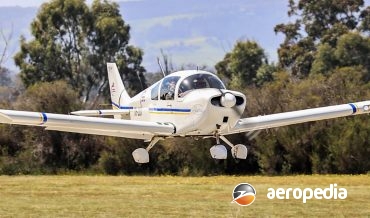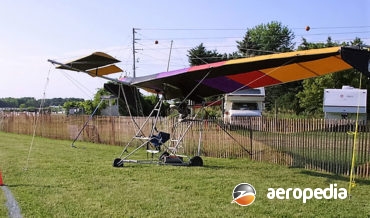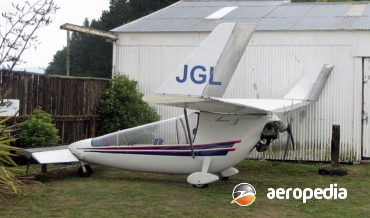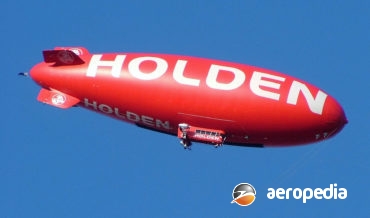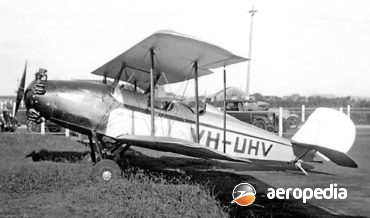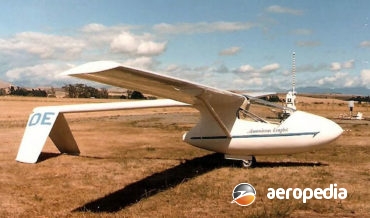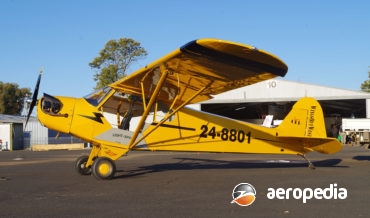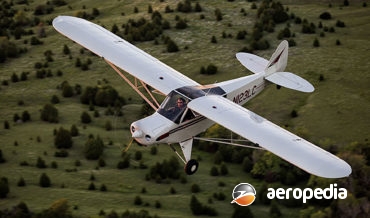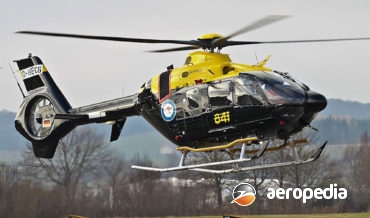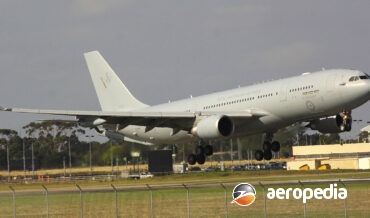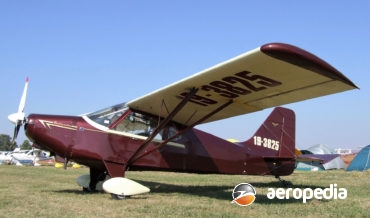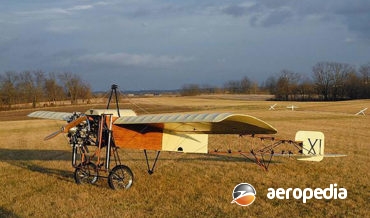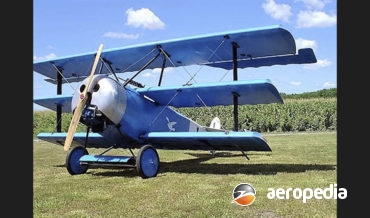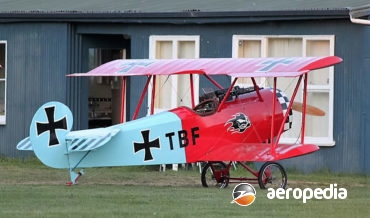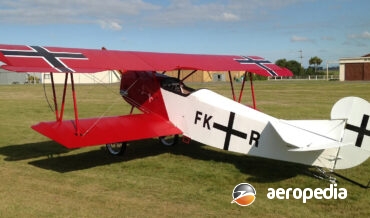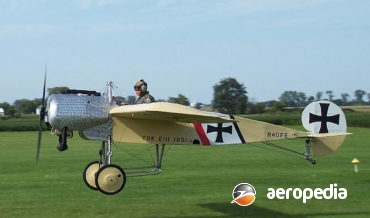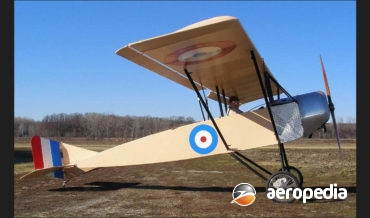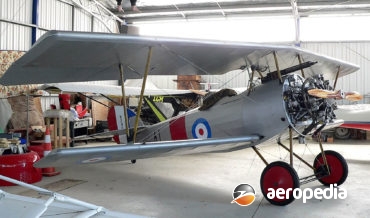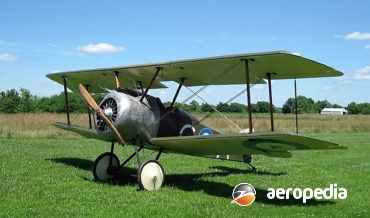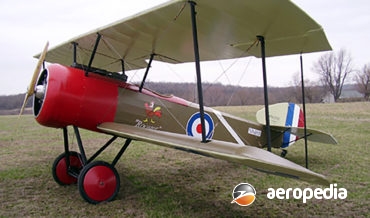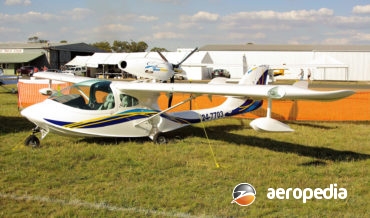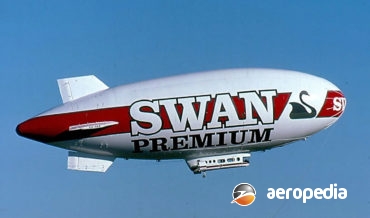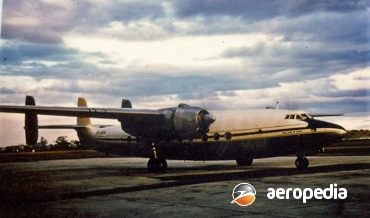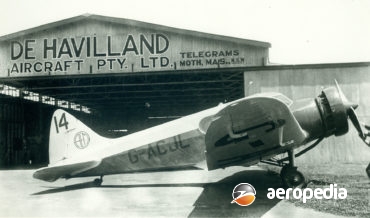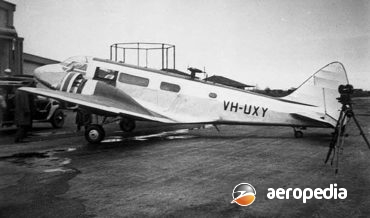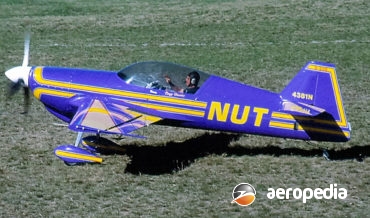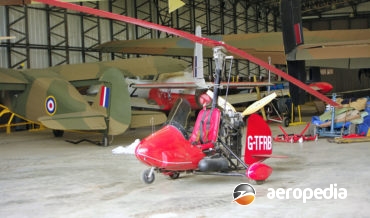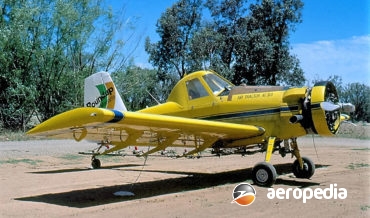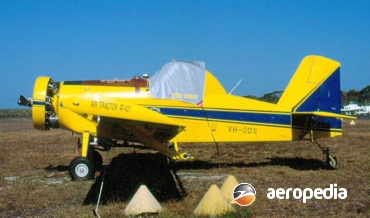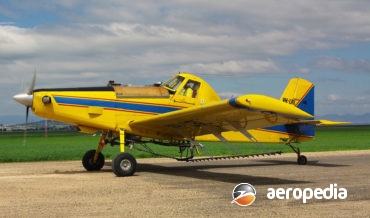David C. Eyre
The Silent 2 is one of a series of single-seat sailplanes produced in Italy to meet FAI type DU-Class regulations. It is produced by Alisport as a ready-to-fly or kit-built glider and is available as a self-launched glider, being fitted with a two-stroke engine driving a single-blade propeller via a
David C. Eyre
- May 8, 2019
The Allison Aircraft Company of 4th and Perry Streets, Lawrance in Kansas was formed in 1920 and its main business was supplying aircraft parts and specialising in rebuilding Hi-lift wings for Curtiss JN-4 Jenny’s. It also built a number of light aircraft.
David C. Eyre
- May 8, 2019
The Alpha Marco J-5, sometimes described as a self-launched glider, was flown for the first time in Poland on 30 October 1983, being designed by Jaroslaw Janowski, and built by a branch of the Marko-Electronic Company in Lodz, Poland, a factory being set up to build the kits.
David C. Eyre
- May 8, 2019
The Pioneer series of light sporting aircraft is produced in kit form in Italy by Alpi Aviation at its plant at La Comina airfield near Pordenone.
David C. Eyre
- May 8, 2019
The Pioneer 300 is one of a series of light touring and training aircraft produced by Alpi Aviation in San Quirino, Italy, the 300 being a two-seater with an electrically operated retractable undercarriage.
David C. Eyre
- May 8, 2019
The Pioneer 400 was developed by Alpi Aviation in Italy and is a four-seat development of the 200 and 300 series and is the flagship of the company’s range.
David C. Eyre
- May 8, 2019
The T-500 is a light single-seat sporting helicopter developed from the Revolution Mini 500 helicopter designed, built and marketed by Revolution Helicopters of Excelsior Springs, Missouri, it being fitted with a Rotax 582 engine and was first available to the market in 1994.
David C. Eyre
- May 8, 2019
The Amax Eagle was produced by Amax Engineering of Donvale Victoria and was made available to amateur builders in kit form in the 1990s. It was produced in two basic models, a single-seater known as the Eagle and a two-seater known as the Double Eagle.
David C. Eyre
- May 8, 2019
Looking similar to the Zenair CH-640, the AMD Alarus is a two-seat light general-aviation touring and training monoplane produced in the United States by the Aircraft Manufacturing & design Company at Eastman in Georgia, the aircraft, like the CH-640, being designed also by Christopher Heintz of Zenair.
David C. Eyre
- May 8, 2019
The Eagle has been produced in the United States since 1975 in single-seat Eagle form and two-seat form as the Double Eagle.
David C. Eyre
- May 8, 2019
The Falcon was designed in the United States and produced by American Aircraft Inc of Albuquerque, New Mexico and produced in single and two-seat variants.
David C. Eyre
- May 8, 2019
The American Blimp Corporation was founded in 1987, and in the following year commenced construction and development of the prototype Lightship A-50. In 1989 Virgin Lightships Inc a subsidiary of the Virgin Group of Companies, was formed as an airship operator and placed an order for four examples in 1990.
David C. Eyre
- May 8, 2019
Built by the American Eagle Aircraft Corp, the prototype of the Eagle series of biplanes known as the A-1, was test flown on 9 April 1926.
David C. Eyre
- May 8, 2019
The Eaglet self-launched glider or sailplane was produced by AmEagle Corp at Muskegon, in Michigan, this company being formed by Larry Haig.
David C. Eyre
- May 8, 2019
The American Legend AL3 Classic Cub is basically a replica of the Piper Aircraft J-3 Cub produced in the United States using modern design and construction techniques, and fitted with a modern Continental four-cylinder engine.
David C. Eyre
- May 8, 2019
The American Legend Aircraft Company of Sulphur Springs, Texas has been involved in the production of reproduction / replicas of the Piper series of aircraft, including the Super Cub and in January 2012 flew an aircraft known as the Super Legend which is similar in appearance to the PA-18 Super
David C. Eyre
- May 8, 2019
The prototype of the EC-135 series (D-HECX) made its first flight at Ottobrunn, Germany on 5 February 1995, this being the first definitive aircraft following the completion of a test flying programme with two BO-108 technology demonstrators.
David C. Eyre
- May 8, 2019
The MRTT was selected by the Australian Government for the RAAF ahead of the rival KC-767 to fulfil Project Air 5402 in April 2004 after a Request for Tender was released in June 2003 for both acquisition and Through Life Support contracts.
David C. Eyre
- May 8, 2019
An Australian entry into the manufacture of light aircraft, the prototype Bushmaster (VH-BOI - c/n 89-001) flew for the first time in Queensland on 28 October 1989.
David C. Eyre
- May 8, 2019
The DR-107 One Design is one of a series of high-performance fully-aerobatic light aircraft designed by Daniel Rihn and produced in kit form for the amateur constructor by Aircraft Spruce & Specialty of Corona, California.
David C. Eyre
- May 8, 2019
For some years Airdrome Aeroplanes at its Holden, Missouri facility has produced 75% scale and full scale replicas of World War I aircraft for the amateur constructor, supplying kits to interested builders.
David C. Eyre
- May 8, 2019
The Dr.1 is a 75% scale replica of the famous World War I fighter and is supplied to the builder in kit form. It is of aluminium tubular construction and has removable three-piece wings which are transportable.
David C. Eyre
- May 8, 2019
During 1917 the principal German fighters of the time were losing their superiority and the German Air Command called for a fighter competition to develop a new fighter.
David C. Eyre
- May 8, 2019
The Airdrome Aeroplanes Fokker D-VII is a 80% scale replica of the German Air Force aircraft of that name, said to be the finest fighter of all the powers during that war, this company being based at Holden in Missouri.
David C. Eyre
- May 8, 2019
The Eindecker E-III (or E.3) was the first combat aircraft in the World to be equipped with a forward-firing fixed machine gun synchronised to fire between the propeller blades, and by some is considered the most important of the Fokker monoplane family early in World War I.
David C. Eyre
- May 8, 2019
The Type L parasol monoplane was produced by Morane Saulnier in 1913 as a development of the Type G two-seat aircraft, and differed from the Type G in having the wing moved from the top of the fuselage to a parasol configuration.
David C. Eyre
- May 8, 2019
The Nieuport 24 replica is one of a series of scale and full-scale World War I aircraft produced by Airdrome Aeroplanes of Holden, Missouri for the sport pilot and it is supplied in kit form for construction by the amateur pilot / builder in two variants, the Nieuport 24 and
David C. Eyre
- May 8, 2019
The Airdrome Aeroplanes Sopwith Camel is a full-scale replica of the World War I fighter designed by Robert Baslee and marketed by his company, Airdrome Aeroplanes of Holden in Missouri.
David C. Eyre
- May 8, 2019
Airdrome Aeroplanes of Holden, Missouri, has for some years produced plans and kits for a series of scale replicas of well known fighters from World War I fitted with modern engines. One of these is a full-scale replica of the Sopwith Pup.
David C. Eyre
- May 8, 2019
Designed by Miguel Rosario, the Seamax is a kit-built two-seat, side-by-side, all composite amphibious flying boat which utilised computer aided design and sophisticated mould making technology.
David C. Eyre
- May 8, 2019
Airship Industries was set up in the early 1980s to build a series of airships in two models, the 500 and 600, and more than a dozen were completed.
David C. Eyre
- May 8, 2019
One of the most graceful and elegant airliners built and known as the Elizabethan Class, the Airspeed AS-57 Ambassador was designed by a team headed by Arthur (A E) Hagg.
David C. Eyre
- May 8, 2019
The Airspeed AS-5 Courier, AS-6 Envoy, and AS-8 VICeroy series was built in some numbers by Airspeed Limited in the 1930s, the company, founded by N S Norway and A H Tiltman, proposing a number of designs but settled on the AS-5 Courier in 1931, a low-wing cantilever monoplane seating
David C. Eyre
- May 8, 2019
The prototype Envoy (G-ACMT – c/n 17), a direct development of the Airspeed Courier, first flew on 26 June 1934 with Wolseley AR.9 Mk II nine-cylinder radial engines, and models were proposed with Gnome-Rhone Titan Major 7Kd radials, or the Wright R-760-E2 Whirlwind engine.
David C. Eyre
- May 8, 2019
The G-200 is primarily a carbon fibre reinforced composite aerobatic monoplane produced in kit form in two main variants by Akrotech Aviation of Scappoo, Oregon, the G-200 single-seat and the G-202 two-seat.
David C. Eyre
- May 8, 2019
The Commander Elite is a two-seat gyrocopter produced by Air Command International of Caddo Mills, Texas and is one of a range of machines produced by this Company.
David C. Eyre
- May 8, 2019
The Air Tractor series of agricultural aircraft was designed in the USA by Mr. Leland Snow. well-known designer of agricultural aircraft, with more than 20 years experience in the field.
David C. Eyre
- May 8, 2019
By 1981 the advantages of turbine-powered aircraft in the agricultural field were being realised throughout the world. Companies producing large agricultural aircraft considered ways of fitting their designs with turbine power plants to take advantage of more economical operation.
David C. Eyre
- May 8, 2019
The AT-401 series was a development of the piston-engined AT-301 series and was the smallest of the series.
David C. Eyre
- May 8, 2019
On the drawing-board at Air Tractor at the same time as the 400 series was a new aircraft, which became known as the AT-503. The prototype (N7309X) first flew in April 1986 and had a wingspan of 14.6 m (48 ft), a 821-kw (1,100-shp) Pratt & Whitney PT6A-45R turboprop and
David C. Eyre
- May 8, 2019
Recent Comments
Archives
Categories
- No categories
Categories
- No categories
Latest Posts
Newsletter

